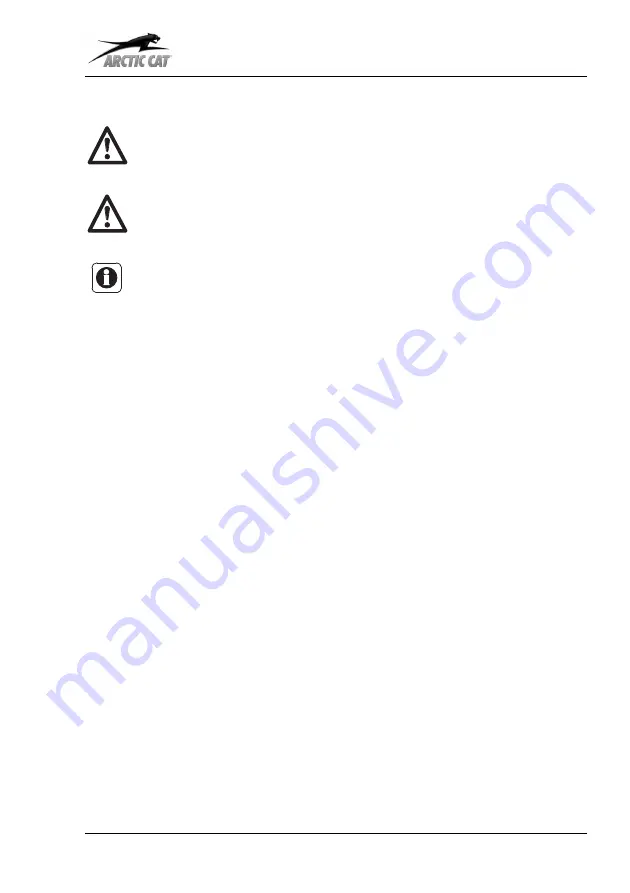
Driving 6
45
6.6.5
Crossing stretches of water
●
Avoid fast-flowing rivers. As the vehicle tyres have buoyancy, the vehicle may
suddenly start floating.
●
Check depth and current of the stretch of water before driving through it. When
doing this, also look for boulders, tree trunks, and other hidden obstacles.
●
Check if you will be able to leave the stretch of water again on the other side.
●
Drive through the stretch of water slowly enough that no wave forms.
●
If the vehicle gets stuck in the mud: free the vehicle by rocking back and forth.
●
Brake after crossing the water and check if the brakes are functioning.
6.6.6
Skidding and slipping
Take the following measures when the vehicle starts skidding or slipping when driving
on sand, ice, mud, or water:
●
Turn handlebar towards the sliding direction.
●
Do not brake as long as the vehicle is slipping.
●
Shift weight forwards.
If the vehicle does not react to the steering movements:
●
Reduce the speed.
●
Slide forwards in the seat.
●
Lean towards the turning direction.
●
Turn handlebar.
WARNING
The vehicle may only cross stretches of water up to a depth of 15 cm. When
driving through deeper water, there is a risk of engine damage.
ATTENTION
If deeper stretches of water have been crossed, the vehicle shall be checked
in an authorised Arctic Cat specialist repair shop.
NOTE
Engine damage caused by penetrating water are not covered by the
Arctic Cat warranty.















































